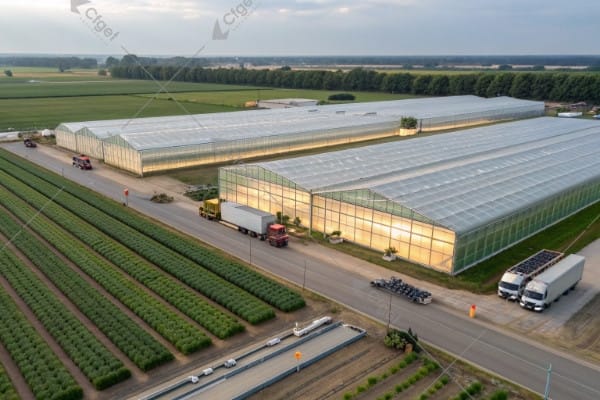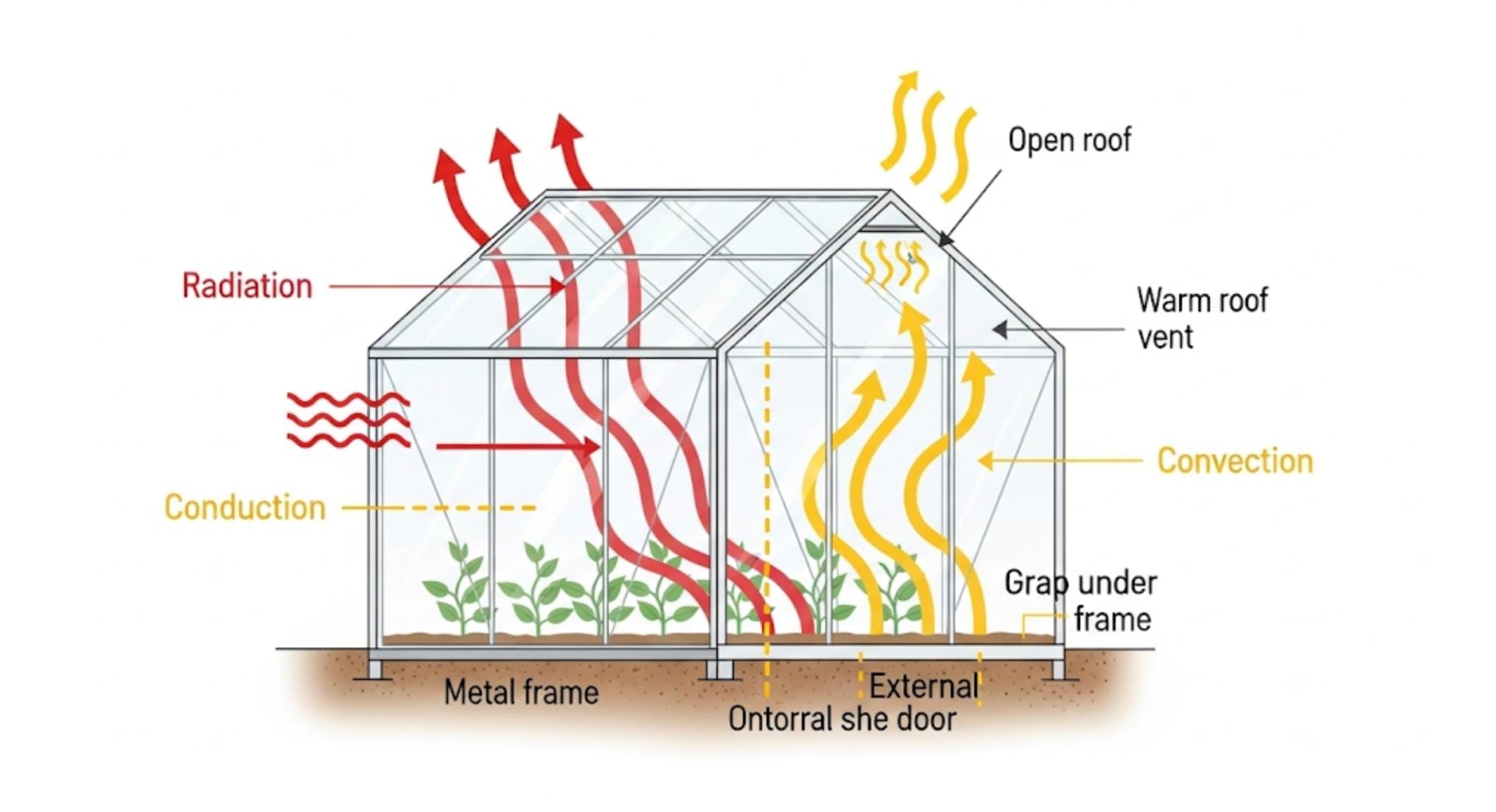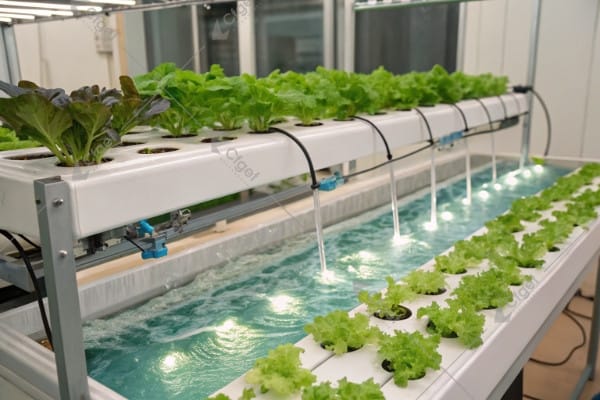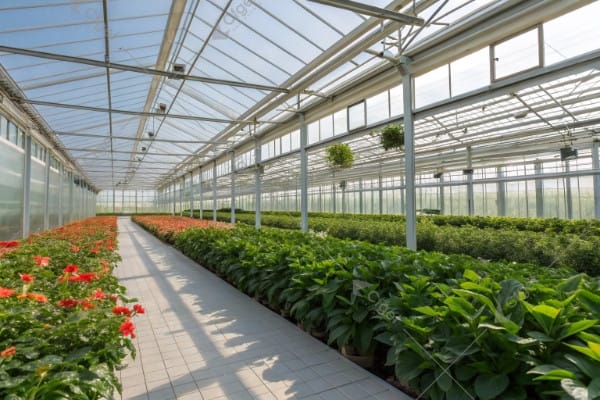Growing orchids without proper conditions leads to stunted growth, disease vulnerability, and bloom failure. Many enthusiasts waste money on expensive specimens only to watch them slowly decline due to environmental mismatch.
A dedicated orchid greenhouse creates the precise microclimate these specialized plants require. By controlling humidity, temperature fluctuations, light exposure, and air circulation, a purpose-built structure dramatically increases success rates for even the most challenging orchid varieties.
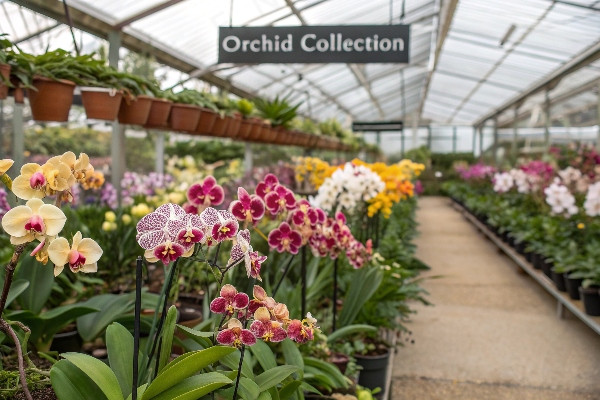
Throughout my 28 years at CFGET designing greenhouse systems for specialized crops, I’ve witnessed remarkable transformations when orchid collections move into dedicated environments. I remember visiting a client in Thailand whose prized Paphiopedilums were struggling despite his best efforts. After installing a custom orchid greenhouse with precise humidity control, his collection not only recovered but thrived beyond expectations, producing blooms that won regional competitions.
Don’t Miss:——Exploring Greenhouse Types: Finding the Perfect Structure for Your Needs
You might like:——Choosing the Best Orchid Greenhouse: A Buyer’s Guide?
Superior Climate Control: Creating the Perfect Micro-Environment?
Orchid enthusiasts often struggle to maintain proper humidity and temperature in home settings. Household environments fluctuate too drastically, stressing plants and inhibiting growth.
Dedicated orchid greenhouses maintain 50-80% humidity levels and precise temperature ranges specific to each orchid type. The controlled environment allows for natural day-night temperature fluctuations that trigger blooming cycles while preventing the extremes that damage delicate root systems and buds.
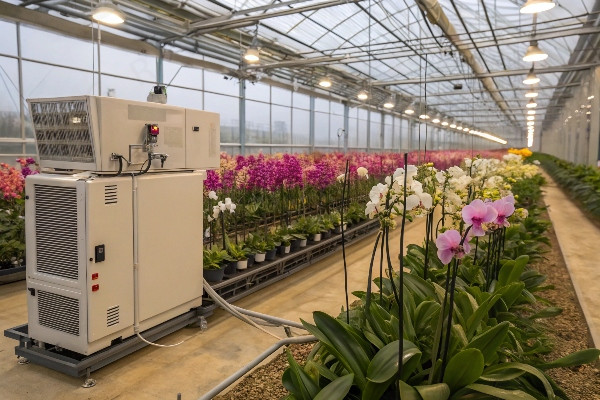
The ability to create and maintain precise growing conditions separates casual orchid keeping from successful orchid cultivation. After designing orchid greenhouses across diverse climates from Southeast Asia to Northern Europe, I’ve found that climate control represents the fundamental advantage that dedicated structures provide.
Humidity management forms the cornerstone of orchid greenhouse design. Unlike typical houseplants, most orchid varieties evolved in humid tropical or subtropical environments where atmospheric moisture remains consistently high. In a dedicated greenhouse, we can maintain humidity between 50-80% through various mechanisms including misting systems, evaporative cooling, and water reservoirs. The structure itself helps contain this humidity, creating a microclimate that mimics natural orchid habitats.
Temperature stability with controlled variation presents another critical factor. Most orchid species require specific day-night temperature differentials to trigger blooming cycles. In Thailand, I worked with an award-winning Dendrobium grower who struggled with inconsistent blooming until we installed a system maintaining a precise 10-15°F day-night temperature differential. The following season, his bloom production increased by over 40%. The greenhouse structure allowed for passive solar heating during daytime hours while automated ventilation systems prevented overheating and created the cooler nighttime conditions necessary for flower induction.
Air circulation represents an often overlooked but essential element of orchid greenhouse climate control. Stagnant air creates breeding grounds for fungal and bacterial problems while hampering gas exchange necessary for photosynthesis. Strategic fan placement creates gentle but consistent air movement throughout the growing space. This circulation helps strengthen stems, reduces disease pressure, and ensures even distribution of atmospheric moisture and temperature.
Light management through the greenhouse covering material provides the final piece of the climate control puzzle. Orchids have diverse light requirements, from high-light Vandas to shade-loving Paphiopedilums. Through selective shading systems and appropriate covering materials, a dedicated greenhouse can provide the precise light levels each variety needs. During a project in Yunnan, China, we implemented adjustable shade cloths that automatically deployed based on light intensity measurements, allowing the grower to maintain optimal conditions for multiple orchid genera within the same structure.
Protecting Your Investment: Shielding Orchids from Pests & Weather?
Outdoor elements constantly threaten orchid collections. Unexpected weather events, pest invasions, and contamination from nearby plants can quickly destroy years of cultivation efforts.
Dedicated greenhouses create a protective barrier against environmental threats. The controlled access points prevent pest introduction, while the structure itself shields delicate plants from damaging wind, rain, and temperature extremes that commonly destroy unprotected collections.
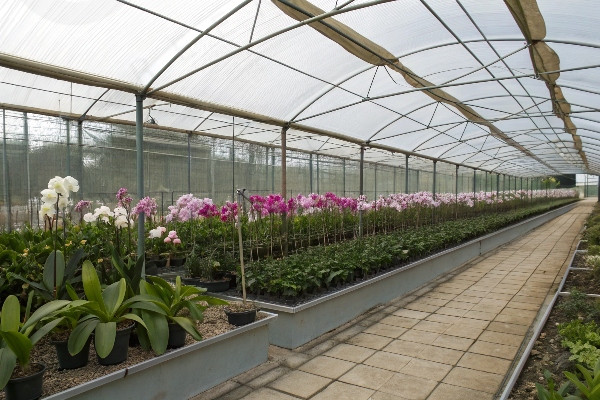
The protective aspects of a dedicated orchid greenhouse extend far beyond simple weather shielding. Through years of designing specialized growing environments, I’ve observed how comprehensive protection systems safeguard valuable collections from multiple threat vectors simultaneously.
Physical barriers provide the first line of defense against environmental challenges. The greenhouse structure itself shields plants from direct weather impacts like heavy rain, hail, and wind that can damage delicate flowers and pseudobulbs. During a consultation with a client in Central Asia, we designed a reinforced polycarbonate structure specifically to withstand the region’s severe hailstorms that had previously devastated his Cymbidium collection. The following season, despite three major hailstorms, his plants remained completely unharmed while outdoor gardens suffered significant damage.
Pest exclusion represents another critical protective function. Dedicated orchid greenhouses incorporate features like fine mesh screening on ventilation openings, double-door entryways, and sealed construction to prevent pest entry. These physical barriers dramatically reduce pest pressure compared to outdoor or household growing. One commercial grower in Europe reported an 80% reduction in pest management costs after transitioning from an open growing area to a properly sealed greenhouse environment. The controlled access points allow for inspection of any new plants before introduction to the collection, creating an effective quarantine system.
Climate buffering protects orchids from sudden environmental changes that stress plants and create vulnerability to disease. The greenhouse structure moderates temperature swings, preventing the rapid fluctuations that damage root systems and trigger bud drop. During a project in northern Thailand, we monitored conditions inside and outside a newly installed orchid greenhouse during the transition between dry and monsoon seasons. While outdoor temperature fluctuations exceeded 30°F within 24 hours, the greenhouse environment remained within a 12°F range, significantly reducing plant stress during this challenging period.
Disease management benefits tremendously from the controlled greenhouse environment. By regulating humidity levels and air circulation, the structure creates conditions that discourage fungal and bacterial proliferation. Watering can be precisely controlled to prevent splash transmission of pathogens between plants. The isolation from outdoor plant material eliminates many vectors for disease introduction. These factors combine to create a growing environment where preventative disease management replaces reactive treatment, preserving plant health and reducing chemical interventions.
Investment protection extends to the economic value of the collection itself. Many orchid varieties represent significant financial investments, with rare specimens commanding prices in the hundreds or even thousands of dollars. The protective environment of a dedicated greenhouse safeguards this investment by dramatically extending plant longevity and blooming capacity. I’ve worked with collectors whose specimens have thrived for decades in properly designed greenhouse environments, continuing to increase in value while providing consistent blooming performance.
Promoting Vigorous Growth and Reliable Blooming Year-Round?
Many orchid enthusiasts experience frustrating growth plateaus and inconsistent blooming cycles. Plants survive but never reach their full potential due to suboptimal growing conditions.
Purpose-built orchid greenhouses stimulate vigorous growth by providing optimized light levels, consistent moisture, and appropriate seasonal cues. These controlled conditions enable plants to direct energy toward robust root development and flower production rather than merely surviving environmental stress.
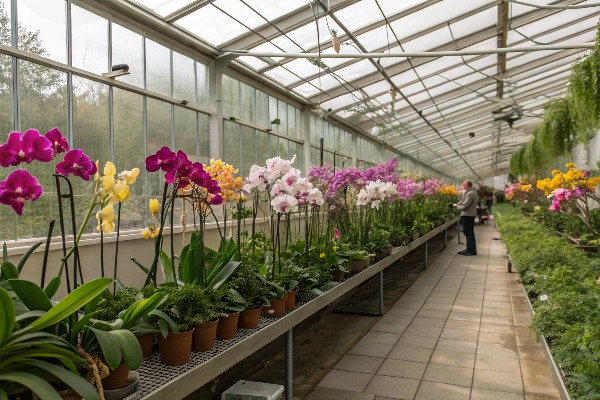
The relationship between environmental optimization and plant performance becomes strikingly evident in dedicated orchid greenhouses. Through careful monitoring of growth patterns across different greenhouse configurations, I’ve identified several key factors that contribute to exceptional vigor and blooming reliability.
Light quality and duration significantly impact orchid performance. In a natural habitat, many orchids grow under forest canopies where light is filtered and diffused. A properly designed greenhouse mimics these conditions using appropriate covering materials and supplemental lighting when necessary. During a project with a research institution in Europe, we installed specialized diffusing panels that scattered incoming light, eliminating harsh shadows and creating even illumination throughout the growing space. The researchers documented a 35% increase in overall plant vigor compared to their previous growing environment, with particularly notable improvements in leaf size and coloration.
Root zone management represents another crucial element for promoting vigorous growth. Unlike conventional plants, many orchids are epiphytes with aerial roots adapted to absorb moisture from the atmosphere. A dedicated greenhouse creates the consistent humidity these specialized root systems require while allowing for appropriate drying cycles. The controlled environment enables growers to fine-tune watering practices based on specific orchid types rather than compromising with general approaches. One collector I worked with in Southeast Asia installed a zoned misting system that provided different moisture levels across his greenhouse, allowing him to group orchids with similar requirements together. This targeted approach resulted in dramatically improved root development across his collection.
Nutritional precision becomes possible within the controlled greenhouse environment. Without outdoor interference from rain or uncontrolled water sources, fertilization programs can be carefully managed to provide optimal nutrition without salt buildup or deficiencies. The ability to regulate water quality further enhances nutritional management. A commercial grower in Thailand implemented a rainwater collection system with his greenhouse, allowing him to use naturally pure water for his more sensitive orchid species. The elimination of chemicals present in his municipal water supply resulted in visibly improved growth rates within just three months.
Blooming reliability improves dramatically through seasonal cue management. Many orchids require specific environmental triggers to initiate flowering, such as temperature differentials, light duration changes, or dry periods. A dedicated greenhouse allows these cues to be provided precisely when needed, regardless of outdoor conditions. I helped design a system for a Phalaenopsis grower that automatically created a two-week cool period at specific times of the year, triggering synchronized flowering across his collection. This level of control transformed his hobby into a small business as he could now reliably produce blooming plants for local sales on a predictable schedule.
Growth consistency throughout the year represents perhaps the most significant advantage. Rather than the stop-start growth patterns common in less controlled environments, orchids in dedicated greenhouses can maintain steady development with appropriate seasonal adjustments. This continuous progress compounds over time, resulting in specimens that reach their genetic potential in size, bloom count, and overall vigor. The cumulative effect becomes particularly evident in slower-growing genera like Paphiopedilum, where optimal conditions can double or triple the rate of maturation compared to suboptimal environments.
Orchid Greenhouse vs. Standard Greenhouse: Understanding the Key Differences?
Many gardeners make the costly mistake of placing orchids in standard greenhouses designed for typical garden plants. These environments often prove too hot, too dry, or too bright for specialized orchid requirements.
Orchid greenhouses feature critical adaptations including higher humidity systems (60-80% vs. 40-60%), more sophisticated ventilation for air movement, specialized shading for diffused light, and often zoned temperature control to accommodate different orchid varieties with varying needs.
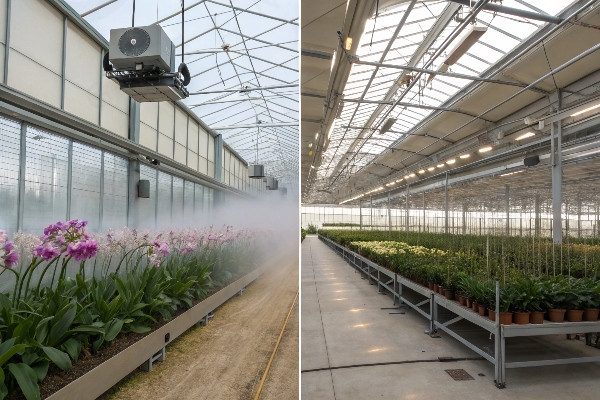
The distinction between standard greenhouses and those specifically designed for orchid cultivation encompasses numerous technical and functional differences. Through my experience designing both types of structures at CFGET, I’ve identified several fundamental differences that significantly impact growing success.
Ventilation systems represent perhaps the most visible difference between orchid-specific and standard greenhouses. While conventional greenhouses typically focus on temperature management through basic roof vents and perhaps side wall openings, orchid greenhouses require more sophisticated air circulation. The ideal orchid environment maintains gentle but continuous air movement to prevent fungal issues while avoiding direct drafts that can damage sensitive new growth. During a project in Yunnan, we installed a multi-tiered ventilation system with low-velocity fans positioned strategically to create circular air patterns throughout the growing space. This approach maintained essential air movement without creating the damaging air currents common in standard greenhouse designs.
Humidity generation and retention systems distinguish orchid greenhouses from their conventional counterparts. Standard greenhouse designs often struggle with excessive humidity and condensation, leading to designs that actively reduce moisture levels. In contrast, orchid greenhouses incorporate features specifically to maintain elevated humidity, including misting systems, evaporative cooling pads, water troughs, and specialized flooring materials that balance moisture retention with drainage. A commercial orchid producer I worked with in Thailand implemented a zoned humidity system that maintained different moisture levels in separate areas of his greenhouse, allowing him to group orchids with similar requirements together for optimal growth conditions.
Light management differs significantly between the two greenhouse types. Standard structures often maximize light transmission for sun-loving crops, while orchid greenhouses incorporate more sophisticated shading and diffusion systems. These might include external shade cloths with automated deployment based on light intensity sensors, internal screening systems, or specialized covering materials with light-diffusing properties. When designing a greenhouse for a Phalaenopsis breeder in Europe, we implemented a dual-layer shading system that could provide anywhere from 30% to 80% shade depending on seasonal requirements and growth stage needs. This level of light customization proves essential for specialized orchid cultivation but would be unnecessary or even counterproductive for typical greenhouse crops.
Temperature zoning represents another distinctive feature of advanced orchid greenhouses. While standard greenhouses typically maintain relatively uniform conditions throughout, orchid-specific designs often incorporate microclimates to accommodate different genera with varying temperature preferences. These zones might be created through separate compartments with independent climate control, graduated bench heights to take advantage of natural temperature stratification, or localized heating and cooling systems. One collector I consulted with created three distinct temperature zones within a single greenhouse structure, allowing him to successfully grow cool-growing Masdevallias, intermediate Cattleyas, and warm-loving Vandas in the same overall space but with conditions optimized for each group.
Water quality management systems frequently appear in specialized orchid greenhouses but remain uncommon in standard designs. Many orchid varieties show sensitivity to water chemistry, particularly dissolved solids and chemical treatments. Dedicated orchid greenhouses often incorporate rainwater collection, reverse osmosis systems, or water treatment facilities to provide appropriate quality for different orchid types. During a project in Central Asia, we designed a comprehensive water management system that collected rainwater during wet seasons, stored it in underground cisterns, and provided this naturally pure water for the client’s collection of sensitive Paphiopedilums that showed leaf tip burn with the local municipal water supply.
Specialized benching and display systems differentiate orchid greenhouses from standard growing structures. The unique growth habits of many orchid varieties require custom growing arrangements including hanging systems for pendulous species, vertical mounting surfaces for true epiphytes, and specialized benching that balances air circulation with humidity retention. These growing surfaces often incorporate materials specifically chosen for orchid culture, such as open-grid designs that allow for air movement while providing humidity from water evaporation below.
Conclusion
A dedicated orchid greenhouse transforms average results into exceptional success by creating the precise conditions these specialized plants demand. With controlled humidity, temperature, light, and protection from external threats, your collection will reach its full potential with robust growth and reliable blooming.

